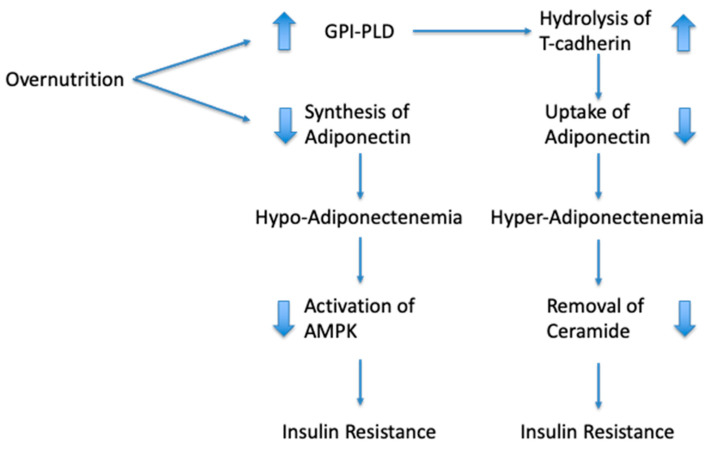Figure 1.
Schematic representation of the association between overnutrition and circulating levels of adiponectin. Overnutrition provokes adipocyte hypertrophy, which gives rise to hypoxia and a reduction in adiponectin synthesis. Dysfunctional adiponectin signaling causes a reduction in AMPK activity, which contributes to insulin resistance. Overnutrition also increases the production of GPI-PLD and its levels in circulation. The GPI-PLD enzyme mediates hydrolysis of T-cadherin. When adiponectin is absent from the cell surface, the cells are no longer able to sequester adiponectin and adiponectin levels in blood become elevated. Cells sequester adiponectin and T-cadherin to allow the disposal of ceramides. Dysfunctional ceramide disposal is a further cause of insulin resistance.

